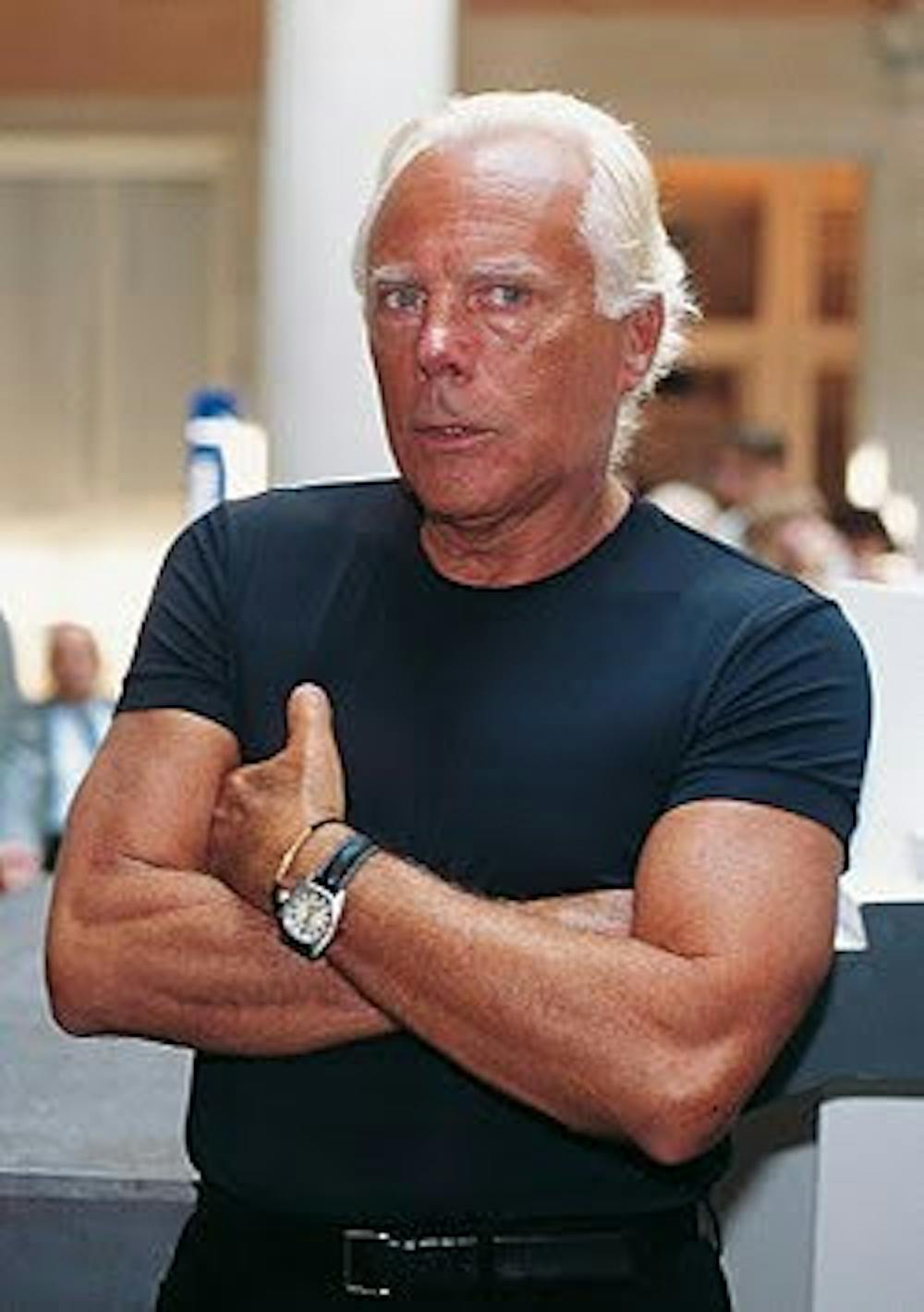By Abigail Holliday
Copy Editor
Fashion legend and trailblazer for the past 50 years, Giorgio Armani, or “Re Giorgio” (King George) as Italians deemed him, died on Sept. 4.
The confirmation of his passing was announced by the Armani Group on Instagram. “With infinite sorrow, the Armani Group announces the passing of its creator, founder, and tireless driving force: Giorgio Armani… Indefatigable to the end, he worked until his final days, dedicating himself to the company, the collections, and the many ongoing and future projects.”
Born in Piacenza, Italy, Armani grew up during World War II, losing friends to war, playing with dolls made of mud and coffee beans, and fulfilling his required military service. To escape the horrors of war, Armani used to go to his local theatre for hope. “The cinema in Milan was a refuge — a palace of dreams — and the movie stars seemed so glamorous,” he said. “I fell in love with the idealized beauty of Hollywood stars.”
According to Biography, after serving in the military, Armani dropped out of medical school and went to work for La Rinascente, an Italian department store, and later got the opportunity to work under Nino Cerruti, an Italian businessman and luxury stylist, as a designer.
It was there that he met Sergio Galeotti. The two quickly became partners, both business and romantic, opening Giorgio Armani in 1975. Their first collection, introducing a men’s clothing line that silhouetted a “natural fit,” was groundbreaking for its time, according to Biography. They removed shoulder pads and the harsh internal lining of what was a traditional men's suit to create a more comfortable and flattering look, catching the attention of businesswomen
Seizing the opportunity for new clientele, Armani released a women’s line the very next year, keeping with the natural fit and using more neutral tones, they introduced what can only be described as a mix “between the stuffy establishment attire popular among male executives at the time and the prim skirt suits favored by many professional women,” according to The New York Times.
Even though Armani dominated Europe, it wasn’t until Richard Gere wore their designs in the film “American Gigolo” that they started to gain America’s attention in 1980, according to Biography.
Armani exploded in popularity throughout the United States thanks to celebrities such as John Travolta, Michelle Pfeiffer and Jodie Foster wearing the brand on red carpets. The brand instantly became “a symbol of success for many business professionals. They especially sought out the brand's ‘power suits,’” according to Biography.
This new demand allowed Armani and Galeotti to begin to expand their growing empire, starting by opening more stores in Milan.
Galeotti died in 1985 due to AIDS, leaving Armani the sole owner of Giorgio Armani, where he remained until his death. Armani admitted, “When Sergio died, a part of me died with him. I'm still amazed that I found within myself the resilience to withstand such an immense pain.” Galeotti’s death led people to question Armani’s power as a solo businessman. His following supremacy over the fashion industry proved them wrong.
Armani went on to open restaurants, hotels, fragrance and cosmetic lines, release accessories (shoes, purses, jewelry, watches, etc.) and own over 600 stores worldwide. In 2005, he premiered his first haute couture line because he wanted the creative challenge, saying, “Think how liberating it is for a designer to make one dress, perfectly, to satisfy only one customer.” Armani also kept his love for the cinema, earning costume credits for opera, theatre, and over 200 movie productions, including “The Dark Knight,” “The Wolf of Wall Street” and “The Social Network,” according to Vogue.
Despite being “King George” and owning a $7 billion fashion conglomerate, Armani remained humble, claiming, “I like the idea of having built this beautiful empire, but I still like to think of myself as the stable boy.”
According to the Armani Group, Armani’s funeral chamber was set up in Milan on Sept. 6 and 7, at Via Bergognone 59, inside the Armani/Teatro, and respecting Armani’s wishes, the funeral was held privately.







